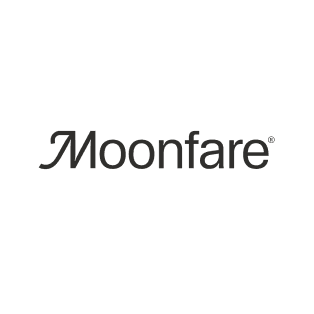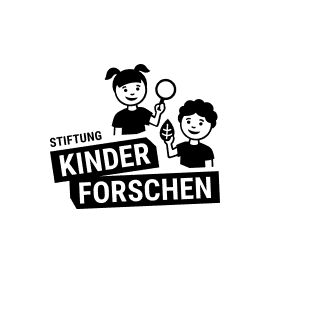
Translation Management
Agency for translations and translation management
Expertise that drives results:
- Expertise in multilingual communication
- Efficient, seamlessly integrated workflows
- Consistent, error-free content across all languages
Did you know that the vast majority of online shoppers prefer to browse in their native language? According to a study by CSA Research, nearly half of all respondents even said they never buy from websites in other languages. As an agency specializing in translation and Translation Management we help you overcome cultural barriers and communicate your brand and product messaging authentically all around the globe.
“Globalization is bringing cultures and markets closer together. Today, digital products reach people all over the world. That’s why content needs to be clear, precise, and culturally relevant. Effective translation management isn’t just a necessity—it’s a competitive advantage.”
SUCCEEDING IN EVERY MARKET
The subtleties of international communication: translation, localization, and transcreation
Why are high-quality translations so important?
Have you ever come across a hilariously bad translation while traveling? A beach sign warning of “shaken sea” instead of “strong currents”? Or an Italian menu offering “Pizza of four train stations” when it actually meant “Four Seasons Pizza”? These small mix-ups might be amusing on vacation. But in a business context, they can hurt your brand image and turn prospects away before they even engage.
Great translations are more than just grammatically correct. They carry the tone and intent of the original message. In a globalized world where brands connect with audiences across cultures, it’s crucial that your messaging lands as intended. A mismatched tone or misleading message can not only cause confusion but also damage trust in your brand.
Translation, localization, or transcreation: What's the difference?
If you want to succeed internationally, your brand messages need to resonate in every target market. But which method is right for which context?
Translation: Translation is the process of rendering a text from one language into another as accurately as possible. The original message and intent should remain unchanged. Example: A medical report is translated in a way that ensures healthcare professionals around the world can rely on the information it contains.
Localization: Localization goes beyond language. It considers cultural, social, and legal nuances of the target audience. For example, a product catalog created for the German market may need more than just translation when adapted for Sweden. It has to reflect local preferences. This could include localizing holidays, currencies, URLs, and legal regulations.
Transcreation: Transcreation blends translation with creative adaptation. The goal is to reimagine a message or concept for a new market without losing the core idea or emotional impact of the original. For instance, an English tagline might be reworked for the German market to achieve the same effect, even if the wording is completely different. Product names, film titles, and TV shows are often transcreated as well.
TRANSLATION WORKFLOW
Key phases of effective translation management
Strategic planning
- Assess the current state of your translation processes
- Define translation requirements in detail
- Coordinate internal and external specialists
- Select advanced language technologies
- Create clear guidelines for translators
- Develop an (automated) end-to-end workflow
- Set timelines and project milestones
Content preparation
- Identify all texts that require translation
- Generate export files for external translation partners
- Ensure integration with tools like your CMS
- Make sure content is complete and up to date
- Adapt content for specific media and platforms
- Prioritize content based on market relevance and business goals
Implementation and adaption
- Build a customized translation memory
- Carry out internal pre-translation step
- Translate externally with native-language professionals
- Apply market-specific and cultural adaptations (localization, transcreation)
- Perform thorough quality checks through proofreading and editing
- Integrate translated content into your target systems
- Continuously refine and optimize the process
TOOLS AND TECHNOLOGY IN TRANSLATION MANAGEMENT
Translation memory and automated workflows
Smart technology in translation management
A key component of modern translation technology is the Translation Memory (TM)—a behind-the-scenes powerhouse. TM systems store previously translated text segments and reuse them in future projects. This not only saves significant time and costs but also ensures a high level of consistency across documents and channels.
A terminology database goes one step further. It ensures that industry-specific terms and internal company language are translated consistently. With international Terminology Management your unique brand voice remains recognizable and relatable in every language.
For companies that regularly create and update content, content management system (CMS) integrations enable seamless translation workflows. By connecting directly to your CMS, translation tasks can be automated and progress tracked in real time.
And finally key-value management systems like Phrase streamline the translation process even further. These tools work with structured key-value pairs—each text element is linked to a unique identifier (e.g. a codesnippet). This allows teams to find and manage translations quickly and reliably. Many platforms also offer collaborative features that make it easier for translators, editors, and developers to coordinate efficiently. The result: higher-quality localized content and faster time-to-market.
DIGITAL PRODUCTS AND THEIR UNIQUE CHALLENGES
Tailored translation strategies for every platform
- Websites: When translating websites, SEO plays a critical role. Market-specific keyword research and cultural adaptation for local audiences can significantly improve search engine rankings and drive organic traffic.
- Apps: For apps, the focus is on delivering a smooth user experience through strong UX Writing Limited screen space on mobile devices often requires concise phrasing—and translations may need to be shortened or adapted depending on the language.
- E-commerce platforms: In online shopping environments, both product descriptions and UX content throughout the purchase journey must be translated with precision. It's also important to consider differences in payment methods, as well as cultural and legal requirements in each target market.
- E-books and digital publications: Formatting is key in digital publications, including the use of fonts and design elements. At the same time, regional language variants and cultural nuances must be translated authentically to ensure clarity and engagement.
- Software and operating systems: Technical translations demand precision and a deep understanding of system logic and functionality. Multilingual terminology databases and native-speaking translators with subject-matter expertise are essential to maintain accuracy and consistency.
- Interactive learning modules: In e-learning, both instructional design principles and the learner’s cultural background must be considered. This includes adapting to local learning habits and prior knowledge, as well as integrating multimedia elements like audio and video.
TRANSLATING IN THE DIGITAL AGE
The synergy of human and machine in modern translation management
AI tools in translation management
With the rapid advancement of artificial intelligence, a transformation in translation management is well underway. Soon, AI-powered tools may be integrated directly into text editors, assisting translators in real time. These systems can analyze large volumes of data and generate context-aware suggestions, speeding up the process while improving accuracy. They consider both the current document’s content and previous translations by the same user. Thanks to machine learning, AI can also incorporate feedback from reviewers and continuously refine its suggestions.
Human expertise: still essential for quality and nuance
While tools and AI can streamline workflows, human expertise remains irreplaceable when it comes to language nuance and cultural sensitivity. Researching high-quality sources, handling sensitive or creative content, and ensuring the right tone and message—these are areas where human judgment is key. Together, humans and machines can deliver a new level of quality, speed, and consistency in translation management.
Trusted by companies across industries






All trademarks, logos, and brand names are the property of their respective owners.
The Experts in User Experience
Featured case study

Volkswagen website rollout in 40 markets and 30 languages
GLOBAL MESSAGES, UNDERSTOOD LOCALLY
Translating with specialist expertise at native speaker level
When linguistic flair meets specialist knowledge: native speaker translations
The world of translation is complex. Different types of text require specific approaches. An advertising text thrives on emotion and must grab the reader, while a technical text requires precision and expertise. In PR communications, the focus is on the company's reputation, which is why the tone and message need to be spot on.
As an agency for translation management and translations of websites, apps and online stores, we work with native-speaking specialist translators. This is because they not only have the linguistic know-how, but also the cultural and technical understanding. A native speaker will pick up on nuances and subtleties that a non-native speaker might overlook. And if this native speaker also has specialist knowledge, this ensures that the original meaning and context of the text is retained in the translation.
The native-speaker specialist translators in our network use their specialist knowledge and cultural skills to convey messages authentically and effectively in any language - so that your content is understood worldwide exactly as you intended.
Languages
Internationalization and localization for many markets
qwp supports you in translating your website, app, or online store for international markets.
We cover a wide range of languages for global success:
- Arabic
- Albanian
- Bulgarian
- Chinese
- Danish
- English
- Estonian
- Finnish
- French
- Georgian
- Greek
- Hindi
- Icelandic
- Italian
- Japanese
- Catalan
- Korean
- Croatian
- Latvian
- Lithuanian
- Luxembourgish
- Macedonian
- Moldovan
- Dutch
- Norwegian
- Persian
- Polish
- Portuguese
- Romanian
- Russian
- Swedish
- Serbian
- Slovenian
- Spanish
- Thai
- Czech
- Turkish
- Ukrainian
- Hungarian
- Vietnamese
FAQ
Frequently asked questions
Is it enough to translate a website into English?
What is the difference between translation, localization and transcreation?
What sets qwp apart from other translation service providers?
How can qwp help to overcome cultural barriers?

The Experts in User Experience
What sets us apart

UX
Expertise
Multimedia user experiences that drive satisfaction and boost conversions

Content Scaling
Know-How
Global rollouts and optimized localization thanks to efficient tools and workflows

Project Teams With Local Expertise
A global network of native-language content and UX professionals

Agile
Methodology
Fast, flexible, and effective implementation using SCRUM and SAFe
The Experts in User Experience
How we help you go further
Get in touch
Smart solutions, made for you.
Your users are our priority: in every piece of copy and at every touchpoint, across the globe. We help you optimize the user experience of your mobile apps, websites, or online stores. And scale your products and content internationally.

Brendan Reiswich
Business Development Manager
Phone: +49 30 30809311



